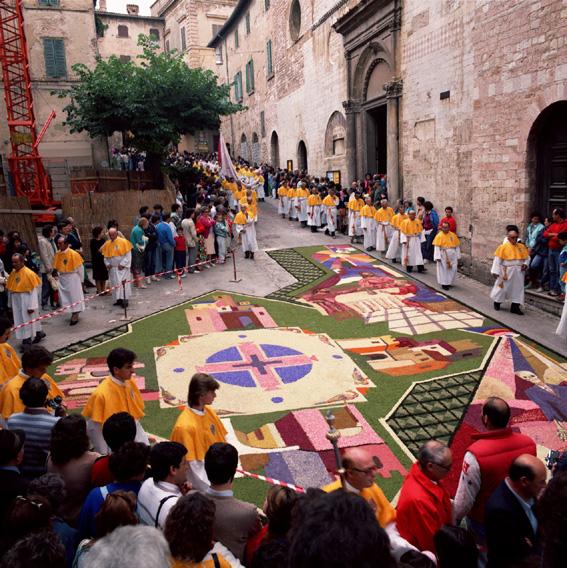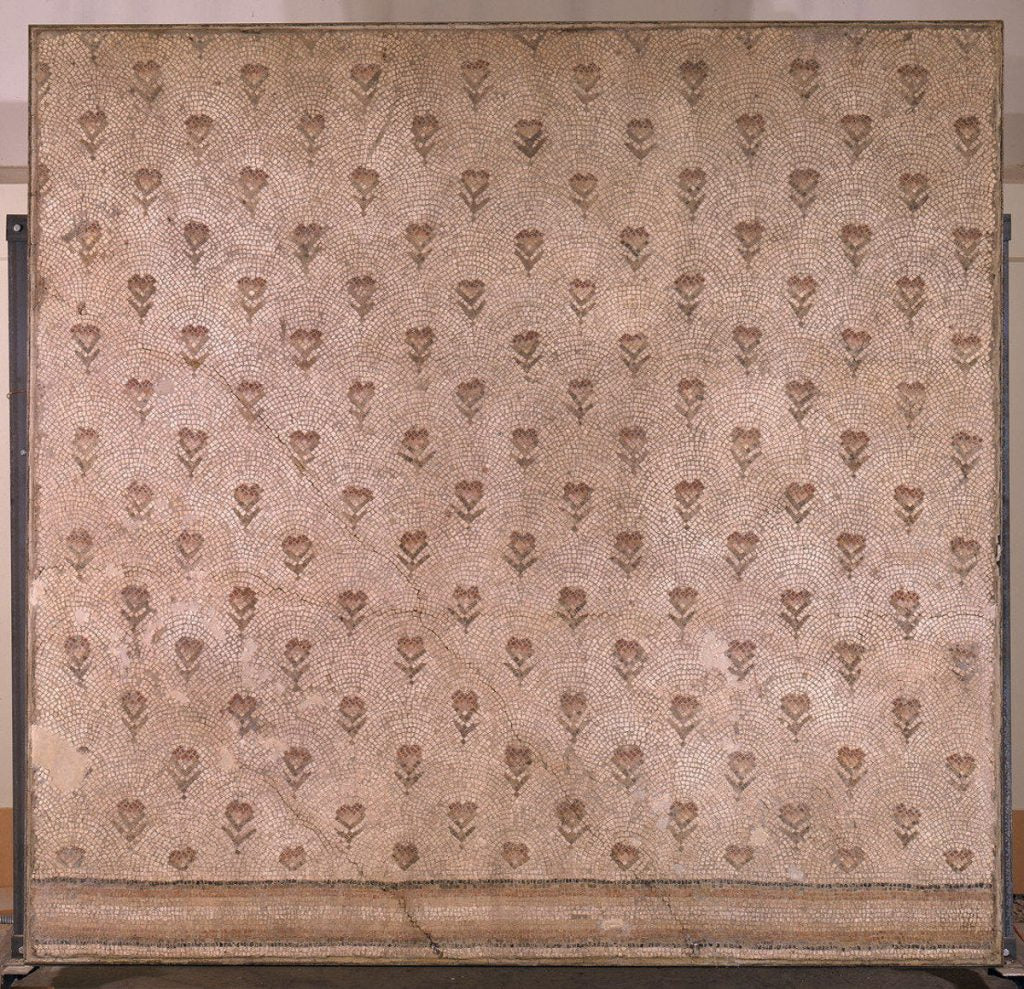The Rutgers University of New Jersey conducted a study that revealed the fact that integrating flowers as part of our home’s decor will amplify one’s positive emotions and help intensify happiness. Whether it’s a personal or a private space, it has been shown that flowers aid in the increment of emotional health and make people more open towards communication, adding a dose of optimism to day-to-day life. The study has also shown that flower or floral pattern should be placed in circulated spaces, such as the living room. Since it’s proven that flowers bring up the best side of our personality, today’s we’re going to show you some of the world’s most beautiful flower mosaic art.
Short Mosaic History
To learn to fully appreciate mosaic art, one must understand how it has evolved during the centuries. Mosaics are as old as the 3rd millennium B.C. They were initially discovered in a Mesopotamian temple and were made of several pieces of stones, seashells and ivory. At first, mosaic art seems to be pretty random, as they were mostly abstract combinations of colorful pieces. Later on, classical artists chose to create figures and patterns. But it wasn’t until the 4th century that mosaics really started making an appearance in ancient history.
Roman history made great use of the mosaic art. Africa and Syria, two of the richest pillars of the Roman Empire, were home to mosaics that later on, when discovered, have taught archaeologists and historians a lot about ancient cultures. Mythological scenes were the favorite subjects for these works of art, depicting scenes from daily life, as well as Gods and triumphant battles.
They were used in Italy, in a lot of Catholic basilicas (some of which are listed below). Depicting biblical scenes and portraits of saints and other religious figures. Often times, these images were surrounded by floral motifs with amazing details and beautiful patterns. Later on, in the 7th and 8th century, they were adopted in Islamic architecture, were they were mostly turned into floral and geometrical patterns with rich and vivid colors.
As history progressed to the Middle Ages, mosaic art became a pillar of Byzantine art. The glimmering gold leaf was present in a lot of portraits and even if a lot of these masterpieces didn’t survive, the ones that did are now worldwide attractions for tourist who want to learn about art and history. Renaissance wasn’t a glorious period for mosaics, not until modernists like Gaudi decided to give them another chance. Today, Gaudi’s works are spread all over Barcelona and have become a must-see element for people coming in from all corners of the world.
Even today, there are certain corners of the world that have gathered well-preserved and stupendous mosaics. One such place is the city of Ravenna, in Italy. Also known as “the city of mosaics”, Ravenna is the place where a lot of important sights and buildings are home to some of the most astonishing mosaics from ancient history. Taken a trip through the history of mosaics may just lead you to the amazing Jameh Mosque of Yazd. Adorned with mosaic patterns in and out, this mosque is a wonder amongst tourists and art lovers.
With Antonio Gaudi’s revival of the art, mosaics have now turned into a popular craft. The elements that are now used to create mosaics have shifted from pebbles and glass to piece of photographs, ceramic elements, pearls or even beads. They have become increasingly more popular after pixel videogame art starting making waves. Today, mosaics are not just part of museums, mausoleum, ruins of roman bath and temples. Instead, they have made their way into street art, pavement decoration, interior design and are even used to bring old pieces of furniture back to life.
Mosaics of Palau de la Música Catalana – Barcelona, Spain

Image from Wikimedia
The Palace of Catalan Music is home to an impressive number of mosaic art that follow intriguing patterns. The palace was designed by architect Lluís Domènech i Montaner and features some of the most beautiful flower mosaic art in the world. The main facade has a second-level balcony with pillars covered in floral mosaics, alongside other captivating yellow ceramic flowers that make up the decor of the rest of the building.
Floral Mosaics in Basilica San Clemente – Rome, Italy
Basilica di San Clemente is not only one of the oldest churches in Rome, it’s also host to some of the most famous mosaic art from around the world. Entering the upper church, you can witness the rectangular nave that displays the imposing Byzantine mosaic. This work of art features amazing details of animals, plants, birds and flowers. The mosaic floors tiles, while a bit worn out, also reveal floral designs that enhance the magnificence of past ages.
Bizere Monastery – River Mures, Romania
Back in 2003, the ruins of the Bizere Monastery in Romania have revealed a beautiful ancient mosaic art pavement. The panels reveal intricate details of more than just flowers, but also real and fantastic beasts and geometrical shapes. Archaeologists assume that this mosaic was part of an Orthodox church floor that dates back to the 10th century. The detailed pavement also includes elements such as crosses with equal arms and solar representations.
Dome of the Rock – Jerusalem

Image from Islamic history and travel
Built between 688 and 692, the Dome of the Rock in Jerusalem is filled with glass mosaic tiles both inside and out. The mosaics speak of Byzantine tradition through the rich floral motifs, without any trace of human or animal figures. While Islam doesn’t prohibit these representations, the flower mosaic art speak for the beauty of the era, together with winged crowns that were worn by Sasanian kings.
Cathedral of Córdoba – Analusia, Spain

Image from wikimedia
The Great Mosque of Corduba is the place where you can visit some breathtaking golden mosaic art. With their Byzantine character, the mosaics feature floral arabesques that are intertwined with bands or Arab calligraphy. They are reminiscent of the Great Mosque of Damascus, telling stories of Islamic cultures in Moorish Spain.
Church of the Acheiropoietos – Thessaloniki, Greece

Image from wikimedia
Ancient Greece was home to some of the most beautiful mosaic art the world has ever seen. The floral decorations that survived in the Church of the Acheiropoietos were what helped determine the age of the construction, estimating its birth year to 450. The floral motifs are part of the three layers of floor mosaic uncovered back in the 5th century.
Sheikh Zayed Grand Mosque – Abu Dhabi, United Arab Emirates
Abu Dhabi is known for being a luxurious tourist destination, but it is also the home of the Sheikh Zayed Grand Mosque, a place where flower mosaic art have made a majestic appearance. Kevin Dean, the artist behind the botanic wonders has managed to turn a dull pavement into a grandiose work of art. The brightly-colored mosaics are spread on white marble background to the chromatic delight of all visitors. The mosaic art are adorned with representations of Middle Eastern flowers, such as roses, lilies, tulips and irises. The sahan is adorned with poppies, while the northern entrance features jasmine and red frangipani. Moving forward to the entrance to the main prayer hall, visitors can feast their eyes on Dean’s morning glories and a plant that lives in the desert, the Pergularia tomentosa.
Umbrian Village Mosaic of Flowers – Umbria, Italy

Image from Umbria
This mosaic art is a bit different than the rest we’ve talked about so far. Instead of using blocks of materials to create them, villagers use actual flowers and their petals to create an amazing carpet that delights visitors attracted to this area. The Flower Festival that’s part of the Corpus Christi celebration brings out the best craftsmen who are ready to decorate the streets with natural floral mosaic. There is no doubt that these mosaics require refined taste and an eye for beauty, as people select the finest and most suitable flowers to create celebratory masterpieces.
Section of a Marble Mosaic Bathhouse Floor – Metropolitan Museum of Art
Bathhouses remind us of the Byzantine period, when mosaic art began to flourish and spread as luxurious decorations that only the upper class would enjoy. This particular photo shows a fragment of a bathhouse floor that’s made with simple, yet elegant floral elements. The fragment was retrieved from Antioch, Roman Syria, and is now part of the METs display.
Basilica of San Vitale – Ravenna, Italy
The presbytery of the Basilica of San Vitale is an amazing masterpiece of mosaics layout that depict a wide variety of elements. The rich ornaments combine elements such as flower, fruits and leaves, converging on a crown held by four angels. The entire surface is adorned with animals, birds, stars and flowers. The triumphal arch is host to no less than 15 mosaic medallions that show Jesus Christ and several other saints. The theophany holds a gold fascia decorated with horns of plenty and twining flowers.
Mausoleum of Galla Placidia – Ravenna, Italy
Build to serve as a martyrium, it was long believed that this was the resting place of Galla Placidia, even if it was discovered later on that neither her nor her family were buried here. Stepping inside the building, one can discover the walls decorated with yellow marble. The upper side shows a beautiful blue mosaic art that are enriched with stars and floral motifs. The mosaics are majestic and stand as one of the main reasons for why the Mausoleum of Galla Placidia is now a World Heritage site.
Mosaic of Zeus and Ganymede – Metropolitan Museum of Art
Considered to be one of the most beautiful mosaics in the world, the depiction of Zeus and Ganymede dates back to the Roman empire. The image shows Ganymede offering Zeus drink, while he takes the shape of an eagle. The entire image is surrounded by astonishing floral patterns that stand proud on the black background. The margins also show birds, reptiles and insects created by the master artist Neikias.
Final Thoughts
Flower mosaic art were a huge part of ancient Roman art. A lot of them were lost because, while figurative motifs were carefully preserved in museum, floral and geometric mosaic were left in their original setting and were subject to deterioration. Throughout the years, efforts were made to stabilize some of these pieces by using mortar, but few of them actually survived. Some years ago, scholars and architects understood that floral mosaics were an important part of history and by preserving them, they could learn more about how this form of art evolved.
Today, floral mosaics exhibit a wide range of vivid colors that are not only suitable for public spaces, but they are often used in home decor. Floral mosaic tiles are either purchased or home-made and are used to adorn everything from walls, furniture to home exteriors and gardens. Because of their pleasant aesthetics, floral mosaic contribute to spiritual well-being and some people like to create these patterns themselves, as a hobby.








